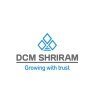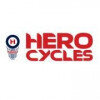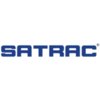Graduate Engineer
300+ Graduate Engineer Interview Questions and Answers

Asked in Worley

Q. What is Finite Element Analysis? Explain with examples.
Finite Element Analysis is a numerical method used to solve complex engineering problems by dividing them into smaller, simpler parts.
It involves breaking down a complex structure into smaller elements and analyzing each element separately.
The results of each element are then combined to obtain the overall behavior of the structure.
FEA is used in various fields such as aerospace, automotive, civil, and mechanical engineering.
Examples include stress analysis of a bridge, therm...read more


Q. Why is the Open Circuit test performed on the Low Voltage (LV) side and the Short Circuit (SC) test on the High Voltage (HV) side of Transformers?
OC test is done on LV side to avoid high voltage on secondary side. SC test is done on HV side to avoid high current on primary side.
LV side has lower voltage rating, hence safer for OC test
HV side has higher current rating, hence suitable for SC test
OC test checks insulation resistance and winding resistance
SC test checks impedance and voltage regulation
Example: A 100 MVA transformer with 220 kV HV and 33 kV LV rating
Graduate Engineer Interview Questions and Answers for Freshers

Asked in CMR Green Technologies

Q. How do you calculate the deflection of conical bodies under axial load?
To find deflection of conical bodies acting with axial load, use the formula for deflection of a cone under axial load.
Use the formula for deflection of a cone under axial load: delta = (P*L)/(E*A)
P is the axial load, L is the length of the cone, E is the modulus of elasticity, and A is the cross-sectional area of the cone
The deflection will be greater at the smaller end of the cone
Consider the material properties of the cone when calculating the modulus of elasticity
Ensure t...read more

Asked in Worley

Q. What is ductility of a metal? Does temperature have any effect on a metal's ductility?
Ductility is the ability of a metal to deform under tensile stress. Temperature affects ductility.
Ductility is the measure of a metal's ability to stretch without breaking.
Metals with high ductility can be drawn into wires or hammered into thin sheets.
Temperature affects ductility, as heating a metal can increase its ductility while cooling it can decrease it.
For example, copper is highly ductile and can be easily drawn into wires, while brittle metals like cast iron have low...read more

Asked in Petrofac

Q. What are the different types of sensors used in the oil and gas industries?
Various sensors used in oil and gas industries include pressure sensors, temperature sensors, flow sensors, level sensors, and gas detectors.
Pressure sensors - used to measure pressure in pipelines and equipment.
Temperature sensors - monitor temperature levels in various processes.
Flow sensors - measure the flow rate of liquids or gases in pipelines.
Level sensors - detect the level of liquids in tanks or vessels.
Gas detectors - used to detect the presence of harmful gases in ...read more

Asked in Bses Rajdhani Power

Q. In a distribution transformer, how many earthing connections are required for a healthy system?
At least two earthing connections are required for a healthy distribution transformer system.
Distribution transformers require earthing to ensure safety and proper functioning.
At least two earthing connections are necessary to create a low-resistance path for fault currents.
One earthing connection is typically made to the transformer tank, while the other is connected to the neutral point of the transformer winding.
Earthing helps in dissipating fault currents, preventing dama...read more
Graduate Engineer Jobs




Asked in Hilti

Q. Why do we use AC appliances instead of DC appliances in our homes?
AC appliances are used in homes because AC can be easily converted to different voltages, making it more versatile for household use.
AC can be easily converted to different voltages, making it more versatile for household use
AC is more efficient for long-distance power transmission
AC allows for the use of transformers to step up or step down voltage as needed
AC motors are simpler and cheaper than DC motors for many applications

Asked in Bses Rajdhani Power

Q. In an 11kV distribution system, what is the voltage between phase to earth?
The voltage between phase to earth in a 11kv distribution system is typically 6.6kV.
In a 11kv distribution system, the voltage between phase to earth is usually 6.6kV.
This voltage is commonly used in medium voltage power distribution networks.
It is important to maintain proper insulation and grounding to ensure safety and reliability.
The voltage between phase to earth can vary depending on the specific system design and requirements.
For example, in some cases, it may be 3.3kV...read more
Share interview questions and help millions of jobseekers 🌟


Asked in DCM Shriram

Q. What is VAR refrigeration system and where it is used? Differentiate VAR & VCR.
VAR refrigeration system is a type of refrigeration system that uses variable speed compressors to adjust cooling capacity.
VAR stands for Variable Refrigerant Volume or Variable Refrigerant Flow.
It is used in buildings with varying cooling loads, such as hotels, hospitals, and offices.
VAR systems use multiple indoor units connected to a single outdoor unit.
VCR stands for Variable Capacity Refrigeration and uses a variable capacity compressor to adjust cooling capacity.
VCR sys...read more


Q. What tests are performed on a transformer?
Tests done on a transformer include insulation resistance test, turns ratio test, winding resistance test, and load test.
Insulation resistance test checks the insulation resistance between windings and between windings and ground.
Turns ratio test measures the ratio of the number of turns in the primary winding to the number of turns in the secondary winding.
Winding resistance test measures the resistance of each winding to ensure it is within acceptable limits.
Load test evalu...read more

Asked in Hilti

Q. Why are transmission line voltages typically multiples of 11, such as 11kV, 22kV, and 33kV?
Transmission lines use multiples of 11 for voltage levels to ensure efficient power distribution and reduce losses.
The 11kV system is derived from the square root of 3 (√3) times the line-to-line voltage in a three-phase system.
Using multiples of 11 helps in maintaining a standard voltage level for transformers and equipment.
For example, 33kV is three times 11kV, which is a common voltage level for medium voltage distribution.
The 11% voltage drop rule in transmission lines is...read more

Asked in JSW Steel

Q. What is the complete overview of the process of making steel?
The process of making steel involves converting iron ore into steel through various stages of heating, melting, and refining.
1. Iron ore is mined and transported to a steel mill.
2. The iron ore is then processed in a blast furnace to remove impurities and create pig iron.
3. The pig iron is further refined in a basic oxygen furnace or an electric arc furnace to produce steel.
4. The steel is then cast into various shapes or forms, depending on the desired end product.
5. The fin...read more

Asked in DCM Shriram

Q. Define industrial production and various types of production. What is manufacturing? And its types
Industrial production is the process of manufacturing goods on a large scale using machinery and labor.
Types of production include mass production, batch production, and job production.
Mass production involves producing large quantities of identical products, such as cars on an assembly line.
Batch production involves producing a specific quantity of a product at a time, such as baking a batch of cookies.
Job production involves producing a unique product for a specific custome...read more

Asked in Electrosteel Casting

Q. How is hardness measured?
Hardness is a measure of a material's resistance to deformation.
Hardness is typically measured using tests like Rockwell, Brinell, Vickers, or Knoop.
It is important in engineering to determine the suitability of materials for specific applications.
Hardness can be affected by factors such as composition, heat treatment, and processing.
Higher hardness values indicate greater resistance to indentation or scratching.
Examples of hard materials include diamond, tungsten carbide, an...read more

Asked in AGI Glaspac

Q. What are the types of bearings and their applications What is your favorite subject Favorite subject related questions Drawings and explanation Types of gears Personal information Health conditions
There are various types of bearings used in different applications, such as ball bearings for high-speed applications and roller bearings for heavy loads.
Ball bearings are commonly used in machinery and equipment, such as electric motors and automotive applications.
Roller bearings are suitable for heavy-duty applications, such as in construction equipment and industrial machinery.
Thrust bearings are used to support axial loads, commonly found in automotive transmissions and m...read more

Asked in JSW Energy

Q. How can you differentiate between an AC motor and a DC motor by visual inspection?
AC motors have a rotor and stator that are visibly different, while DC motors have a commutator and brushes.
Look for a rotor and stator in an AC motor, which are visibly different in size and shape.
Check for a commutator and brushes in a DC motor, which are not present in AC motors.
AC motors typically have a simpler design compared to DC motors, which have more components like brushes and a commutator.

Asked in Electrosteel Casting

Q. What is the tensile strength of Ductile Iron?
The tensile strength of Ductile Iron typically ranges from 60,000 to 100,000 psi.
Tensile strength of Ductile Iron is influenced by factors such as the manufacturing process, chemical composition, and heat treatment.
Typical tensile strength values for Ductile Iron range from 60,000 to 100,000 psi.
Ductile Iron is known for its high strength and ductility, making it suitable for a variety of engineering applications.

Asked in LTIMindtree

Q. What are some real-life examples that illustrate the concepts of Object-Oriented Programming (OOP)?
Real-life examples of Object-Oriented Programming include modeling a car as an object with properties and methods.
Modeling a car as an object with properties like color, make, model, and methods like start, stop, accelerate
Creating a banking system where accounts are objects with properties like balance and methods like deposit, withdraw
Developing a video game where characters are objects with properties like health, position and methods like move, attack

Asked in Hero Cycles

Q. What is the difference between a 2-stroke and a 4-stroke internal combustion engine?
2-stroke engines have a power stroke every revolution, while 4-stroke engines have a power stroke every other revolution.
2-stroke engines have a simpler design with fewer moving parts compared to 4-stroke engines.
2-stroke engines require a mixture of oil and fuel for lubrication, while 4-stroke engines have a separate oil reservoir.
2-stroke engines produce more pollution due to incomplete combustion, while 4-stroke engines are more fuel-efficient and environmentally friendly....read more

Asked in JSW Steel

Q. 1. What Is preventive maintenance and break down maintenance 2.types of break types of coupling and it's function
Preventive maintenance involves regular inspections and maintenance to prevent breakdowns, while breakdown maintenance is performed after a breakdown occurs.
Preventive maintenance is planned maintenance performed on a regular basis to prevent equipment failure.
Breakdown maintenance is reactive maintenance performed after a breakdown has occurred to restore equipment to working condition.
Types of couplings include rigid, flexible, and fluid couplings.
Rigid couplings do not all...read more

Asked in JSW Steel

Q. What is the appropriate temperature for hot metal, and what are the reasons for this specification?
The appropriate temperature for hot metal is typically between 2000-2300 degrees Fahrenheit to ensure proper forging and shaping.
Hot metal is usually heated to a temperature range of 2000-2300 degrees Fahrenheit for forging and shaping processes.
This temperature range allows the metal to be malleable enough for shaping without being too hot to cause excessive oxidation or burning.
Different types of metals may have specific temperature requirements for optimal forging and shap...read more

Asked in Bses Rajdhani Power

Q. What is considered a good reading when checking earthing resistance?
A good earthing resistance reading is typically below 5 ohms for effective grounding in electrical systems.
A reading below 1 ohm is ideal for sensitive equipment.
For general installations, a resistance of 5 ohms or less is acceptable.
In high-voltage systems, aim for less than 2 ohms.
Regular testing ensures safety and compliance with electrical standards.

Asked in NGK Spark Plugs

Q. What is WordPress , how to uplaod the website to live server?
WordPress is a popular content management system used to create websites. To upload a website to a live server, you need to follow a few steps.
Install WordPress on your local machine or server
Create your website using WordPress
Choose a web hosting provider and purchase a hosting plan
Upload your website files to the hosting server using an FTP client or cPanel
Create a database and user for your website on the hosting server
Import your website's database to the hosting server
Up...read more

Asked in Coforge

Q. What is Dbms? and diffrent ddl dml commands?
DBMS stands for Database Management System. DDL commands are used to define the structure of the database, while DML commands are used to manipulate data.
DBMS is a software system that allows users to define, create, maintain, and control access to databases.
DDL (Data Definition Language) commands are used to define the structure of the database, such as creating tables, altering table structures, and deleting tables.
Examples of DDL commands include CREATE, ALTER, and DROP.
DM...read more

Asked in Lal Baba Seamless Tubes

Q. What are the different types of heat treatment processes?
Different types of heat treatment processes include annealing, tempering, quenching, and case hardening.
Annealing: Heating metal to a specific temperature and then slowly cooling it to relieve internal stresses and increase ductility.
Tempering: Reheating quenched metal to a specific temperature to improve toughness and reduce brittleness.
Quenching: Rapidly cooling heated metal to increase hardness by forming a martensitic structure.
Case hardening: Adding a hard outer layer to...read more

Asked in TCS

Q. What is the difference between C and C++?
C is a procedural programming language while C++ is a multi-paradigm programming language with object-oriented features.
C is a procedural programming language while C++ supports both procedural and object-oriented programming.
C does not have classes and objects like C++.
C++ has features like inheritance, polymorphism, and encapsulation which are not present in C.
C++ allows function overloading and operator overloading which are not supported in C.
C++ has a richer standard lib...read more

Asked in LTIMindtree

Q. Write code to generate the first 12 prime numbers.
The code to generate the first 12 prime numbers involves checking divisibility by numbers up to the square root of the number.
Start with a list of prime numbers and a counter for the number of primes found.
Loop through numbers starting from 2 and check if they are prime by dividing them by all previous prime numbers.
If a number is not divisible by any previous prime numbers, add it to the list of primes.
Continue this process until you have found 12 prime numbers.

Asked in Satrac Engineering

Q. How would you manufacture this particular drawing?
The drawing can be manufactured using CNC machining processes.
Identify the material required for the part
Determine the dimensions and tolerances specified on the drawing
Select appropriate CNC machine and tools for the job
Program the CNC machine to follow the design specifications
Perform test runs and quality checks to ensure accuracy

Asked in Vodafone Idea

Q. What is wavelength, and can you explain it?
Wavelength is the distance between two consecutive peaks or troughs of a wave.
Wavelength is measured in meters or nanometers.
It determines the color of light and sound frequency.
Shorter wavelengths have higher energy than longer wavelengths.
Examples include the wavelength of visible light, radio waves, and X-rays.

Asked in Jio

Q. Write code to count the number of occurrences of each character in a string.
Code to count the occurrence of each character in a string.
Use a dictionary to store the count of each character.
Iterate through the string and update the count in the dictionary.
Print the dictionary to display the count of each character.
Interview Questions of Similar Designations
Interview Experiences of Popular Companies





Top Interview Questions for Graduate Engineer Related Skills



Reviews
Interviews
Salaries
Users
















